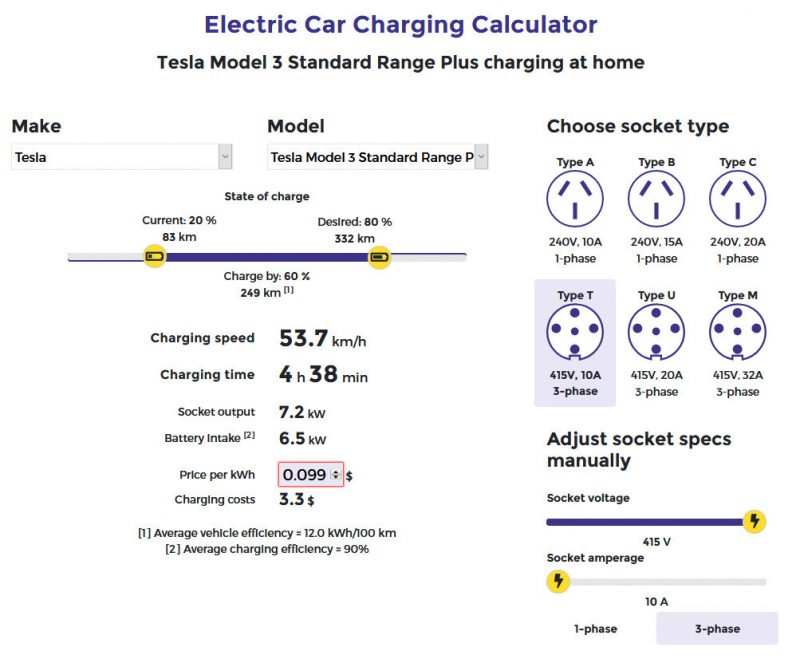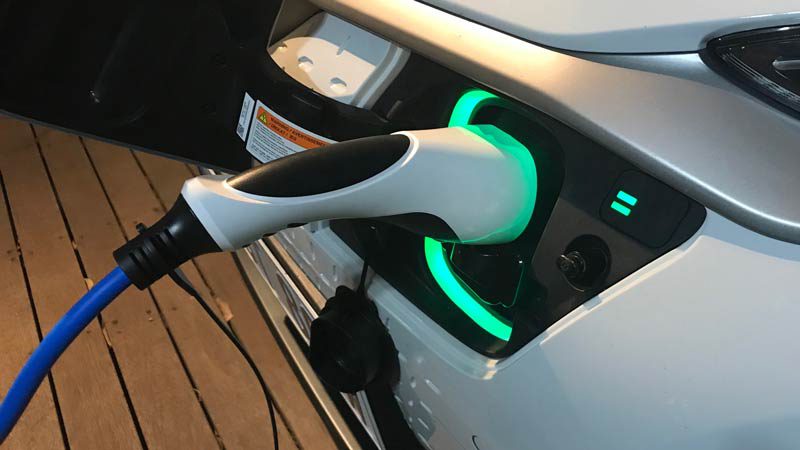Making a decision to buy a car can be a tricky thing at the best of times, and more so when taking new technology into account – such as a battery electric vehicle (BEV).
With range anxiety, access to charging infrastructure and price cited as barriers to uptake of electric cars, questions to be considered by any diligent consumer would – and should – include how long any given BEV might take to charge, where to charge and at what type of charger to use, how much charging it will cost, and how much range you require.
One website offers a solution for those wanting an easier way of working these things out than jotting it down on paper, in the form of an electric car charging calculator.
Created by New Jersey-based EVCompare.io, the calculator is set up for current EV drivers (or potential EV drivers) in 11 different countries including several in Europe, the EU itself, the US, China, and Australia.
The purpose of EVCompare.io’s calculator is not, however, to prove a point about how fast an EV can charge at a DC fast or ultra-rapid charger (which just as a reminder can be in as little as 10 minutes depending on your EV’s top charging rate and battery size).
Instead, this calculator seeks to inform consumers about the differing aspects of AC charging, which is commonly done at home or at what are called “destination chargers” (such as those found in shopping centre carparks).
To use the calculator, a driver can first choose the make and model of a particular EV (note that choosing a particular country doesn’t remove models that are not available in that country).
Next step is to choose a socket type. If you’re wanting to look at how long it will take to charge off your standard home socket, choose Type A (240V, 10 amps, single phase).
Other options include three-phase, 10 amps (that would emulate your specially installed “wallbox” that delivers 7kW charging rate in your garage or similar.
To emulate a 22kW destination charger, choose three-phase, 32 amps (Type M) – note, the calculator will let you know if the vehicle’s maximum charging rate is less than your chosen socket.
Plug in your desired start and end SoC (state of charge) – the default is 20% to 80%, considered the “sweet spot” for lithium-ion battery charging.
From there you will get an estimated charging time, added range and charging speed.
Then, enter your local electricity rate (remember to adjust it for time of day you intend charging your vehicle to get, for example, off peak costs).
Our example below, which uses a Tesla Model 3 Standard Range Plus, will take 4 hours 38 min on a 7kW wall charger from 20-80%, charging at a rate of 53.7km/hr and extending the range of the vehicle by 249km.
Based on, for example, EV overnight rates offered by Powershop in Queensland, this would cost $3.30.
Compared against your average internal combustion engine (ICE) vehicle (which uses 10.8 litres per 100km according to data from Budget Direct), at a cost of $1.50 per litre of petrol totalling about $40, that’s some pretty serious savings.

The calculator will also give you some insight into whether or not to go to the expense of installing a three-phase charger at home, as discussed by AEVA veteran Bryce Gaton in this FAQ here.
Do you need your vehicle to charge in four hours? Can you get away with a single-phase as long as you regularly charge for enough time to cover your everyday driving needs?
Do you need a car with a large battery? (There is a good argument that although people are keen for the price of EVs to come down, the push to counter range anxiety with larger batteries – which are the main driver of the higher cost of EVs – and therefore longer range, will continue to keep the cost of EVs high even if battery prices fall.
We think that the calculator is a great way to answer some if not all of these questions, although the addition of an ability to do a comparison of vehicles would be nice, as well as being able to download that comparison in a spreadsheet.
The shift to electric mobility does indeed pose a number of scenarios and considerations for buyers, and calculators such as this are a great example of how to assess those factors.

Bridie Schmidt is associate editor for The Driven, sister site of Renew Economy. She has been writing about electric vehicles since 2018, and has a keen interest in the role that zero-emissions transport has to play in sustainability. She has participated in podcasts such as Download This Show with Marc Fennell and Shirtloads of Science with Karl Kruszelnicki and is co-organiser of the Northern Rivers Electric Vehicle Forum. Bridie also owns a Tesla Model Y and has it available for hire on evee.com.au.

